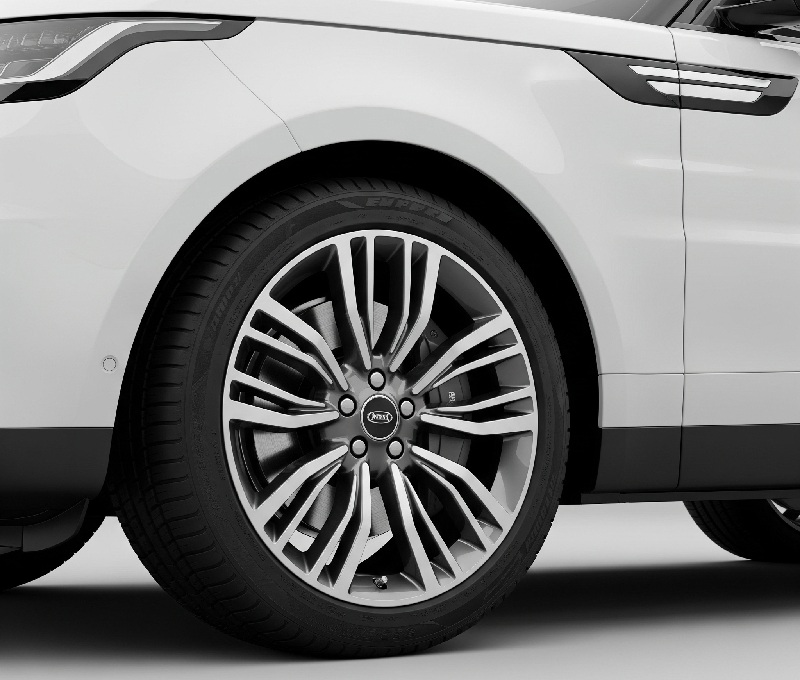Perfect Tire Size For Your Land Rover Defender 130
Choosing the right size tires for your Land Rover Defender 130 is crucial for optimal performance and safety. The tire size not only affects the aesthetics of your vehicle but also impacts its handling, comfort, and off-road capabilities. Understanding the tire size specifications and considering various factors will help you make an informed decision. This article will explore the different aspects of tire size for the Land Rover Defender 130, the common options available, and the pros and cons of upgrading to a larger or smaller size.

Understanding Tire Size Specifications
Tire size specifications may seem confusing initially, but once you understand the basic format, it becomes easier to decipher. The size is usually represented in a sequence of numbers and letters, such as 265/65R17. Let’s break it down:
- The first number (265) represents the tire’s width in millimetres.
- The second number (65) indicates the aspect ratio, which is the height of the sidewall as a percentage of the tire’s width.
- The letter (R) denotes the construction type, with “R” standing for radial.
- The last number (17) represents the diameter of the wheel in inches.
Understanding these specifications allows you to narrow your options and find the perfect tire size for your Land Rover Defender 130.
Factors To Consider When Choosing The Right Size Tires
When selecting the tire size wheels, there are several factors to consider. These include:
- Vehicle usage: Are you primarily using your Defender 130 for off-road adventures or daily commuting? The type of terrain you encounter will determine the ideal tire size. Off-road enthusiasts may opt for larger tires with aggressive treads, while those primarily driving on paved roads may prefer smaller, smoother tires for improved fuel efficiency and comfort.
- Load carrying capacity: Consider the maximum weight your vehicle can carry and choose a tire size that can handle the load. Overloading your Land Rover Defender 130 can lead to poor handling, increased wear, and decreased fuel efficiency.
- Clearance and fitment: Ensure that the chosen tire size fits within the wheel wells without rubbing against any suspension components or the vehicle’s body. Additionally, check for any modifications that may affect the clearance, such as lift kits or aftermarket accessories.
Considering these factors, you can narrow down your options and find the perfect tire size for your Land Rover Defender 130.
The Importance Of Tire Size For Land Rover Defender 130
The tire size plays a significant role in the overall performance and safety of your Land Rover Defender 130. Here’s why it is essential to choose the right tire size:
- Handling and traction: The tire size directly affects your vehicle’s handling and traction. Larger tires provide a larger contact patch, improving grip and stability. On the other hand, smaller tires may offer better maneuverability and responsiveness.
- Off-road capability: If you frequently take your Land Rover Defender 130 off-road, choosing the right tire size is crucial. Larger tires with aggressive treads can provide better traction on challenging terrains, while smaller tires may struggle.
- Fuel efficiency: The tire size can impact your vehicle’s fuel efficiency. Larger tires may increase rolling resistance, leading to lower fuel economy. On the other hand, smaller tires can improve fuel efficiency by reducing the overall weight and rolling resistance.
- Comfort: The tire size also affects the ride quality and comfort of your Land Rover Defender 130. Larger tires with thicker sidewalls can absorb bumps and provide a smoother ride, while smaller tires may transmit more road imperfections to the cabin.
Considering these factors and finding the right tire size will ensure that your Land Rover Defender 130 performs optimally in various conditions while prioritizing your safety and comfort.
Common Tire Size Options
The Land Rover Defender 130 is a versatile vehicle that offers a range of tire size options to suit different needs. Here are some common tire size options:
- 265/75R16: This is a popular tire size for the Land Rover Defender 130. It provides a good balance between off-road capability and on-road comfort. The larger diameter and wider tread offer improved traction and ground clearance.
- 235/85R16: This tire size is slightly narrower than the 265/75R16 but offers a taller sidewall for increased off-road capability. It provides excellent traction in challenging terrains and better load-carrying capacity.
- 255/55R18: This tire size may be suitable for your Land Rover Defender 130 if you prioritize on-road performance and comfort. It offers a wider tread for better grip on paved roads and a sportier look.
- 285/75R16: This tire size is an excellent choice for those seeking maximum off-road capability. It offers a larger diameter, wider tread, and aggressive tread pattern for enhanced traction and ground clearance.
These are just a few examples of tire size options available for the Land Rover Defender 130. Consider your specific requirements and consult a professional to find the perfect tire size for your vehicle.
Off-Road Vs. On-Road Tyre Size Considerations
When choosing the tire size for your Land Rover Defender 130, it is essential to consider whether you prioritize off-road capabilities or on-road performance. Here are some considerations for each scenario:
Off-road considerations:
- Opt for larger tire sizes with aggressive tread patterns for improved traction and ground clearance.
- Choose tires with sidewall protection to resist punctures and damage from rough terrains.
- Ensure that the tire size does not cause any rubbing against suspension components or the body of the vehicle.
- Consider additional modifications like lift kits or fender flares to accommodate larger tire sizes.
On-road considerations:
- Smaller tires can offer better fuel efficiency and improved handling on paved roads.
- Choose tires with a lower aspect ratio for improved responsiveness and cornering abilities.
- Consider tires with a softer compound for enhanced grip on dry or wet roads.
- Check the load-carrying capacity to ensure it meets your requirements.
Considering these considerations, you can select the right tire size to meet your specific needs, whether you prioritize off-road capabilities or on-road performance.
How To Measure Your Land Rover Defender 130’s Current Tire Size
Before considering upgrading to larger or smaller tires, knowing the current tire size on your Land Rover Defender 130 is crucial. Here’s how you can measure it:
- Check the sidewall: The sidewall of your tire should have a series of numbers and letters indicating the current tire size.
- Decipher the code: The tire size is usually represented in a sequence of numbers and letters. By understanding the format, you can determine the tire’s width, aspect ratio, construction type, and diameter.
- Confirm the fitment: Ensure the current tire size fits within the wheel wells without any rubbing or clearance issues. Check for any modifications affecting the fitment, such as suspension upgrades or wheel spacers.
By accurately measuring your Land Rover Defender 130’s current tire size, you can make informed decisions when considering upgrading to a larger or smaller size.
Other Canada Car News at:
Honda Civic: The Tenth Generation Masterpiece
Upgrading To A Larger Or Smaller Tire Size: Pros And Cons
When contemplating upgrading to a larger or smaller tire size for your Land Rover Defender 130, weighing the pros and cons is essential. Here are some advantages and disadvantages of each option:
Upgrading to a larger size:
Pros:
- Improved ground clearance for off-road adventures.
- It enhanced off-road traction and capability.
- A more aggressive and rugged appearance.
- Better stability and grip in challenging terrains.
Cons:
- Increased weight, which may negatively impact fuel efficiency.
- Potential rubbing against suspension components or bodywork.
- Reduced acceleration and braking performance.
- Potential speedometer and odometer inaccuracies.
Downsizing to a smaller size:
Pros:
- Improved fuel efficiency due to reduced weight and rolling resistance.
- Better handling and responsiveness on paved roads.
- Increased acceleration and braking performance.
- Potential cost savings on tire replacements.
Cons:
- Reduced ground clearance and off-road capability.
- Limited availability of tire options in certain sizes.
- Increased susceptibility to damage from potholes and road imperfections.
- Potential speedometer and odometer inaccuracies.
Before upgrading to a larger or smaller tire size, consider these pros and cons based on your specific requirements, driving conditions, and preferences.
Finding The Right Tyre Size For Optimal Performance And Safety
Choosing the right tire size for your Land Rover Defender 130 is crucial for optimal performance, safety, and overall driving experience. By understanding the tire size specifications, considering various factors such as vehicle usage and load capacity, and evaluating the pros and cons of different options, you can find the perfect tire size that aligns with your needs.
Whether you prioritize off-road capabilities or on-road performance, the Land Rover Defender 130 offers tire size options to enhance your driving experience. Measure your current tire size accurately, consult with professionals if needed, and make an informed decision when considering upgrading to a larger or smaller size.
Remember, the tire size affects the aesthetics of your Land Rover Defender 130 and impacts its handling, comfort, and off-road capabilities. Choose wisely, and enjoy the optimal performance and safety that the correct tire size can provide.


